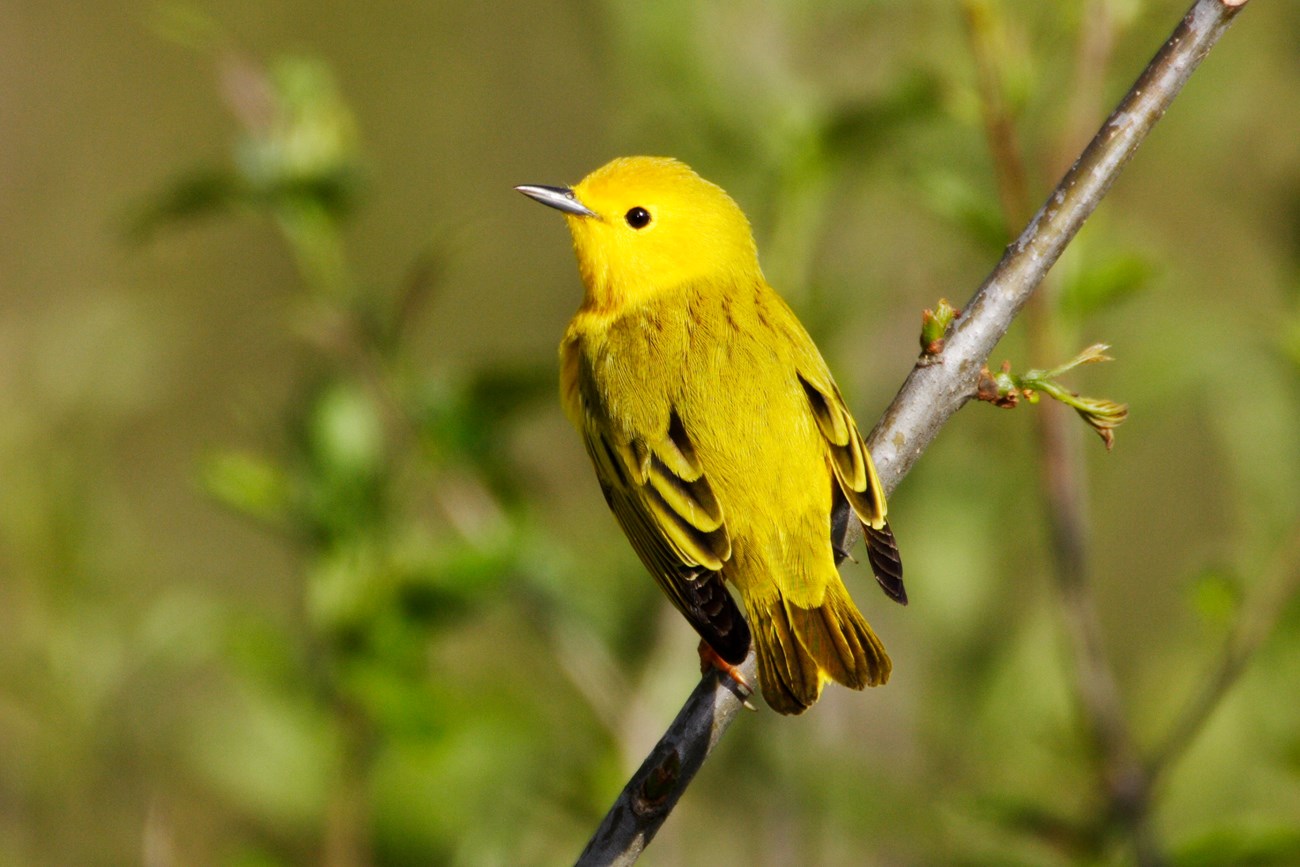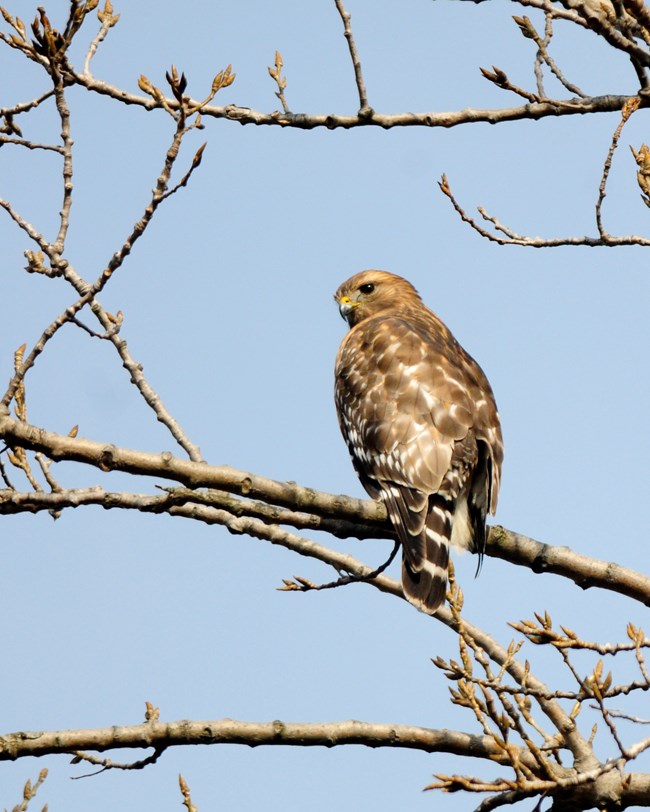
© Jim Schmidt Cuyahoga Valley National Park's diverse landscape provides habitat for about 250 species of birds. Of these, 28 species are of concern for conservation. The park provides important habitat for their survival. There are certain bird species that call the valley home year-round. These include cardinals, blue jays, chickadees, woodpeckers, goldfinches, and several others. Birds by SeasonIn addition to resident species, visitors may notice seasonal variations in the park’s bird communities, as outlined below. During the winter, visitors from the north join our hardy resident species. They seek refuge from the extreme conditions of the boreal forest or tundra from which they have arrived. Examples of winter visitors include American tree sparrows, pine siskins, and various types of ducks and raptors. A lucky visitor may even encounter a northern shrike or a short-eared owl. Many of these winter visitors come and go irregularly, depending on weather conditions and the availability of food resources.
Spring is a popular time for birdwatching in the park. Beginning in late winter and extending into June, birds migrate north into northeast Ohio and beyond. May is the pinnacle month to observe a great diversity of migrants. The second week of May is sometimes called “the biggest week in birding”.
During this time, driven by hormones, many species show off their finest plumage and sing their loudest and most enticing songs. Many will stay in the valley for the summer and breed, while others continue north. Spring census counts in the park regularly tally over 120 species in a single day. Birds detected during this time of year come in many colors, shapes, and sizes. They include metallic-blue indigo buntings, vivid-red scarlet tanagers, and over twenty species of wood-warblers in shades of blue, yellow, green, purple, and orange. There are many beautiful sights to behold in springtime – don’t forget to bring a pair of binoculars! As the deciduous forests leaf out in summer, the birds settle in. The migrant species have either moved on or begun nest-building, and many of the resident species have started raising their young. The valley hosts around 120 species of breeding birds, many of which can be easily overlooked.
Important breeding habitats represented in the park include large forests, early successional growth, large grasslands, marshes, and swamps. Some species will raise multiple clutches of young before fall, relying on plentiful food sources to feed those hungry mouths. Fall is a time of transition similar to spring, but the migration is less pronounced. September provides another opportunity to see neotropical migrant species as they pass through again, this time heading south. Fall birding can be challenging – many birds exhibit drab plumages and some species’ appearance can vary considerably depending on age, sex, and molt. Additionally, birds can be harder to find as they silently forage and move through the early fall colors. Census counts in the fall tend to be a little lower than those in the spring.
Fall visitors can hope to spot large flocks of blackbirds in and around forests, fields, and wetlands. These flocks can consist of thousands of grackles, cowbirds, red-winged and rusty blackbirds, and starlings. Grackles tend to be very active and numerous during this time. If you are lucky enough to spot one of these bird masses, enjoy it while it lasts – they can descend on a habitat, engage in a noisy feeding frenzy, and move on before you’ve had a chance to grab your binoculars. 
© Doug Marcum Popular RaptorsTen raptors are either summer or year-round residents of the Cuyahoga Valley. Bald eagles first began nesting the valley in 2006 and are now seen regularly. Peregrine falcons can also be spotted high above the valley floor. Wetland BirdsThe park's riverine and wetland habitats support many different bird species. Great blue herons, not known to nest in the park before the 1980s, now raise young in three heronries within or adjacent to the park boundary. Wood ducks, Canada geese, and other waterfowl are found throughout the park. To learn more, read about a recent National Park Service wetland bird study conducted in the park. Going Birding?
Select a Park:Select a Species Category (optional):
Search results will be displayed here.
|
Last updated: July 24, 2023
